2020 Corvette Stingray: First Drive Review
Chevy’s fastest and most powerful entry-level ‘Vette offers plenty of adrenaline-spiking fun.
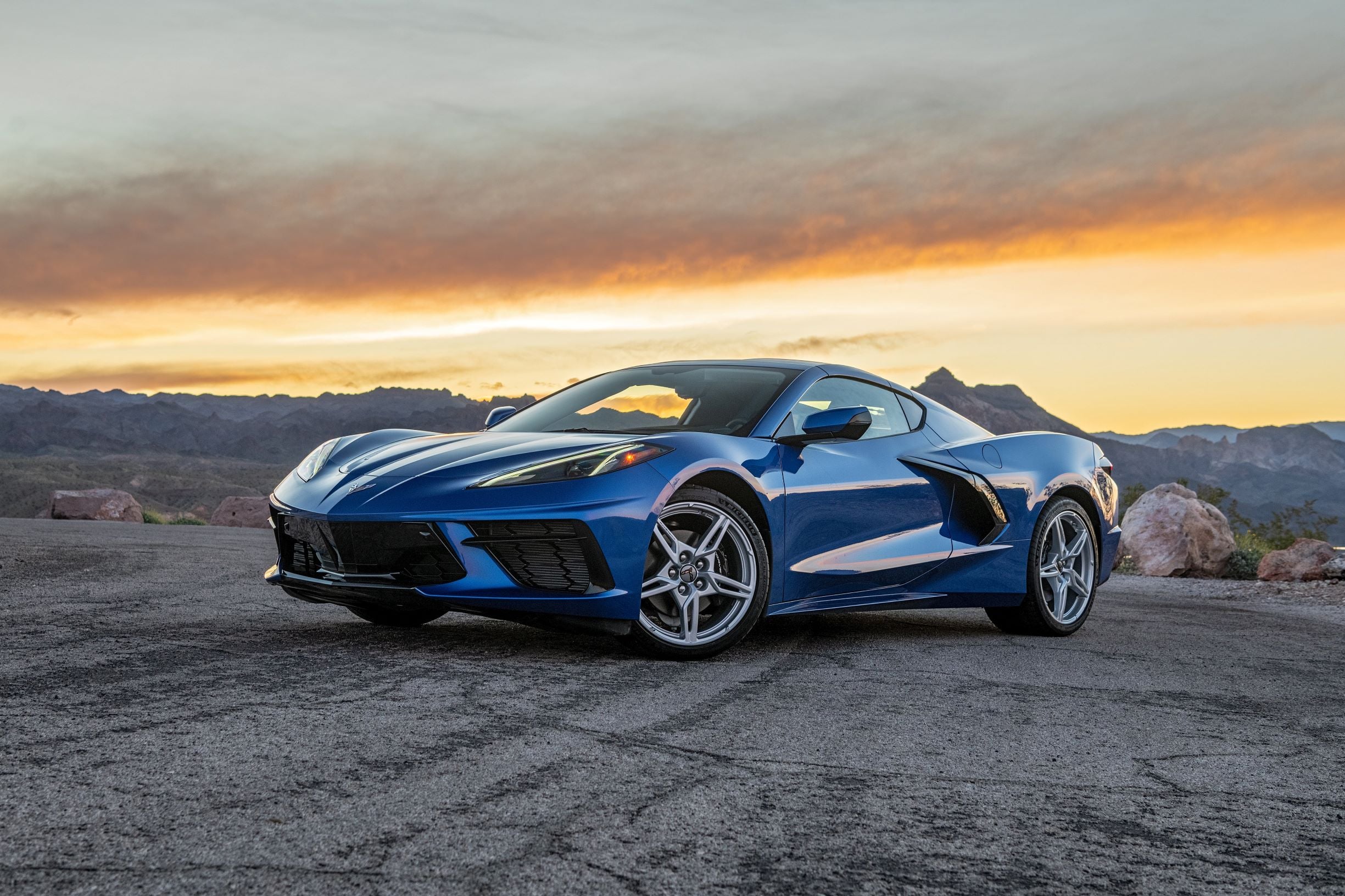
With the introduction of the first mid-engine Corvette, it’s clear that Chevrolet is vying to compete with other eight-cylinder European supercars by offering commensurately blistering performance at a fraction of competitors’ cost. The eight-generation (C8) Stingray, the fastest and most powerful entry-level ‘Vette ever, aims to accomplish this on both the road and the track.
https://www.youtube.com/watch?v=v5S9NvOD3_8
An all-new LT2 6.2-liter V8 roars to life at the push of a button, putting 495 horsepower and 470 lb-ft of torque (when equipped with the Z51 Performance Package) on tap. Transferring the output to the rear wheels is Chevy’s first dual-clutch transmission—developed for this car specifically—with eight speeds in two shafts: one for even gears, one for odd gears. It’s conceptually the same as the Lamborghini Huracan Evo‘s or Aston Martin DB11‘s, promising to shift quicker than humanly possible via electronically-controlled actuation, as well as deliver continuous torque.
https://www.youtube.com/watch?v=k0FjkvFQcso
Z51-rigged Stingrays are billed with a 2.9-second zero-to-60 mph time. But unless you’ve got loads of experience piloting high-performance vehicles and an ultra-accurate internal clock, the easiest way to experience the powertrain’s…well, power…is to feel it by blasting off from naught using the car’s drag race-ready Launch Control, which is optimized for maximum acceleration.
At a standstill, the left foot presses hard on the brake and the right foot floors the gas pedal until the engine reaches 3,500 revs. When the brake is released, the Performance Traction Management system takes over and catapults the vehicle off the line hard and fast with very little wheel spin.
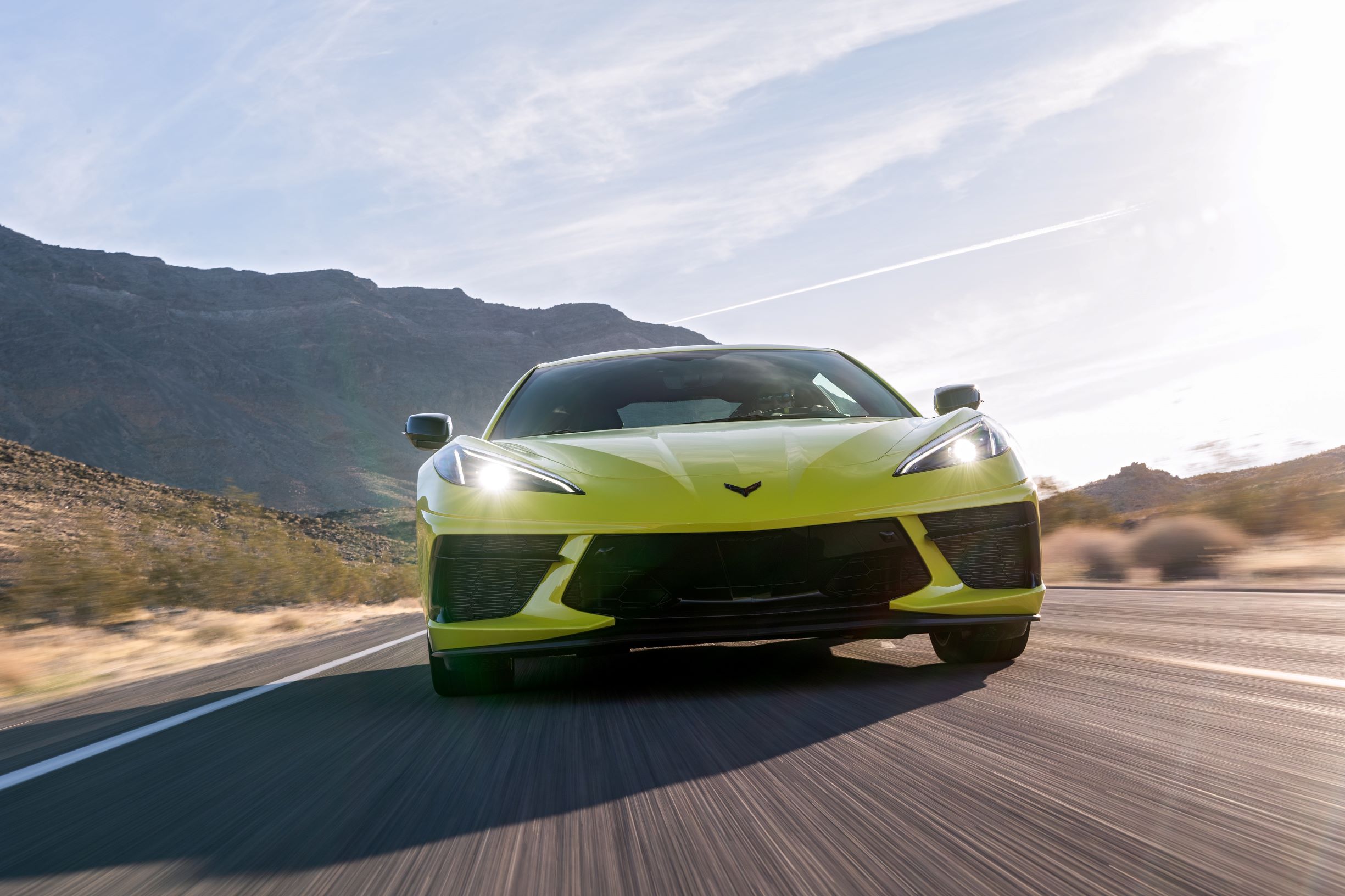
Launch Control is reserved for Track Mode, the most aggressive of the Stingray’s core settings. I had the pleasure of testing Track Mode without worrying about speed limits or reckless driving laws at Spring Mountain Motorsports Resort and Country Club, located 60 miles west of Las Vegas. Two Z51 Stingrays were available to drive on an autocross course: one with an FE3 performance suspension, and one with an FE4 suspension equipped with Magnetic Ride Control 4.0.
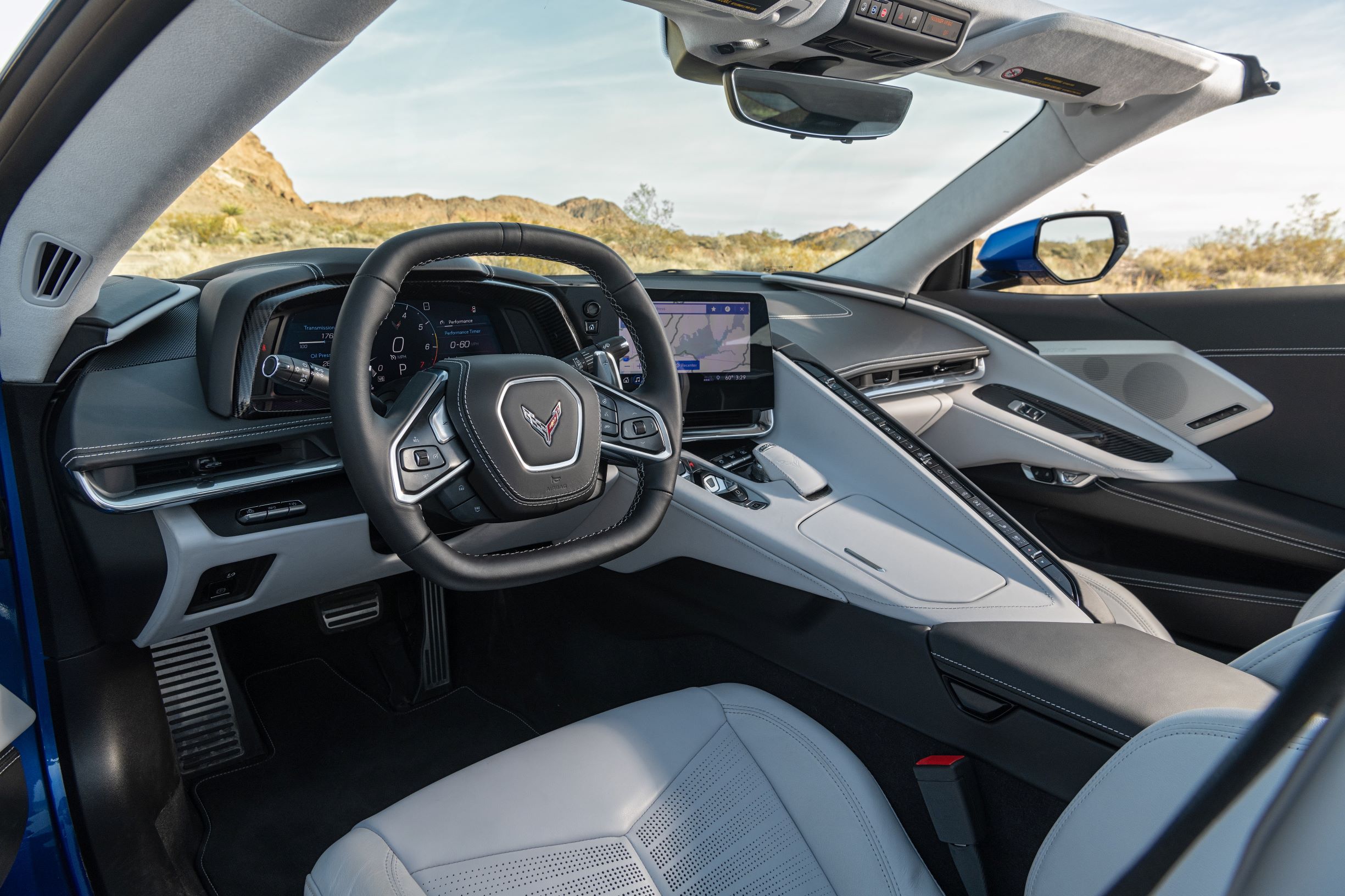
The latter’s setup boasts body-mounted accelerometers and electronics capable of making adjustments in milliseconds. As I braked, weaved and punched the gas out of tight corners, the body remained incredibly stable, which helped improve my performance over what I was able to do in the still-nimble FE3-specced model. Both Stringrays offered plenty of adrenaline-spiking fun.
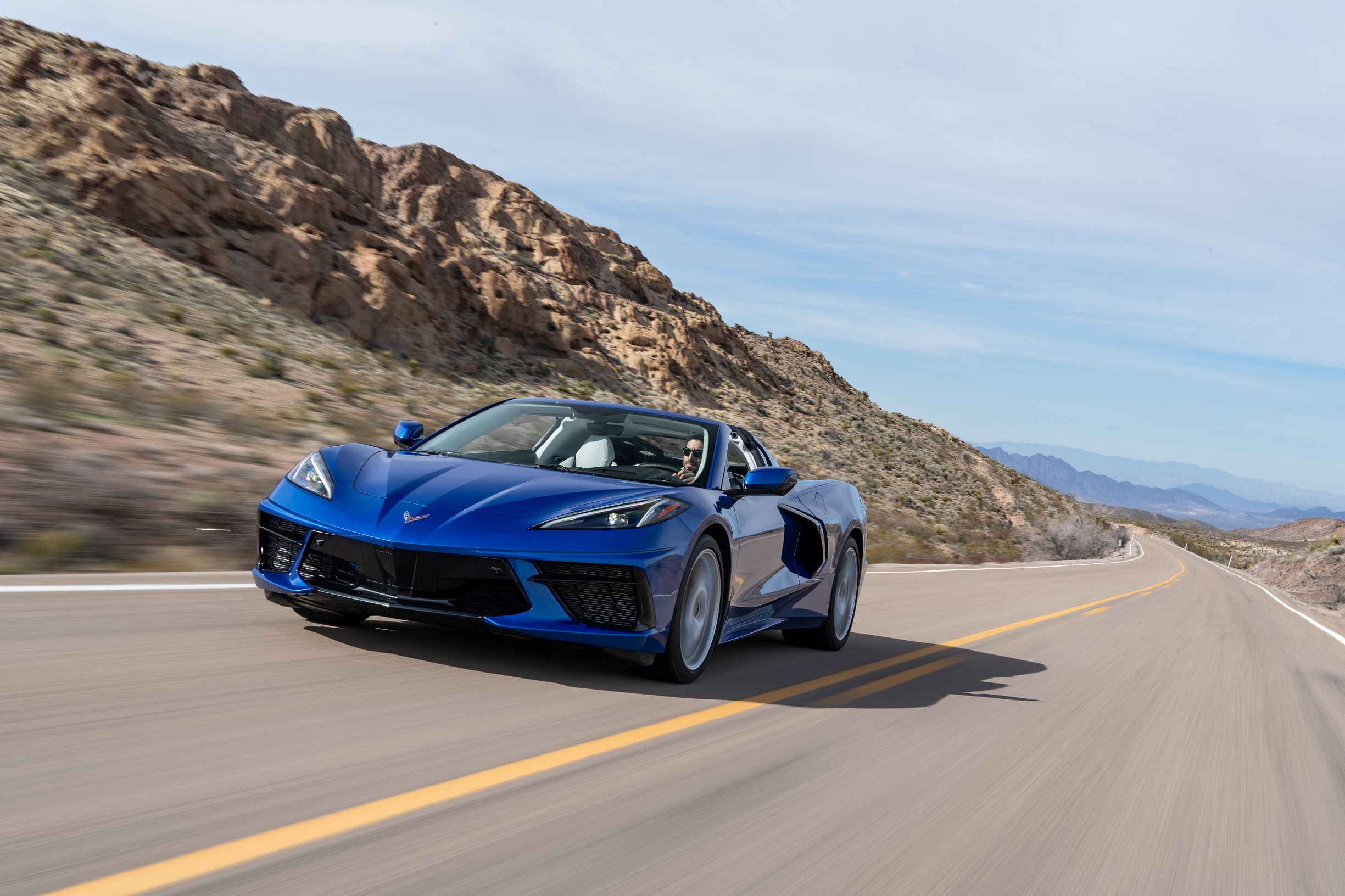
The racy resort also features a 2.2-mile circuit. I’d actually run both the C7-generation Corvette Z06 and ZR1 around it in 2018 and noticed that the former’s rear tended to kick out while accelerating out of a sharp turn onto the longest straight, while the 755-hp flagship remained glued to the pavement. The new Stingray, though not as powerful, behaved much more like the ZR1. Even for an amateur driver like myself, it was easy to control no matter how hard I pushed.
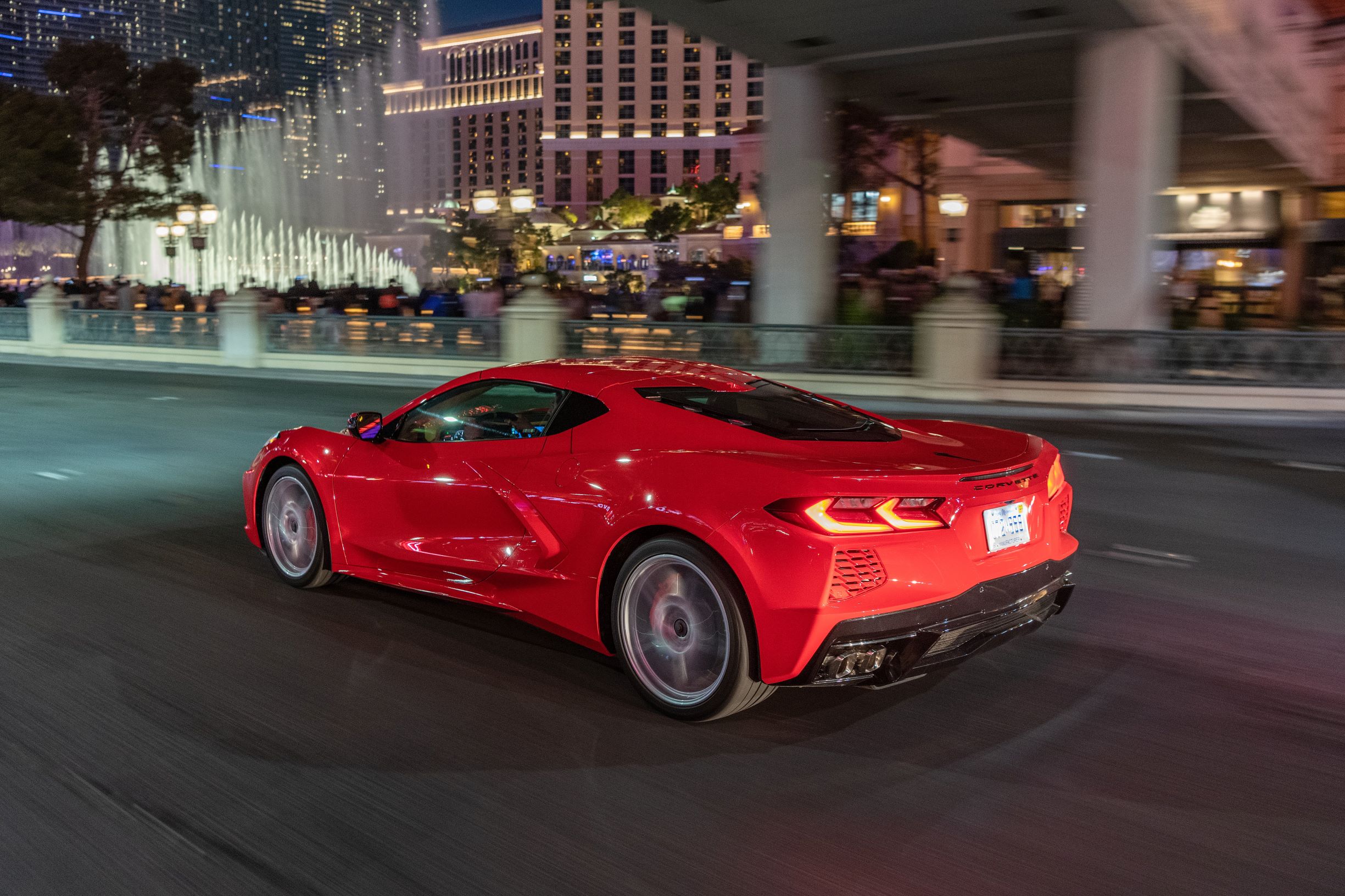
But in the capable hands of Vehicle Performance Engineer Chris Barber, who headed the development of the Stingray’s chassis control, the car still stayed in line. I rode shotgun during a hot lap as Barber bested my times by huge margins, paying close attention to how few wheel twitches were needed to keep the Stingray reigned in.
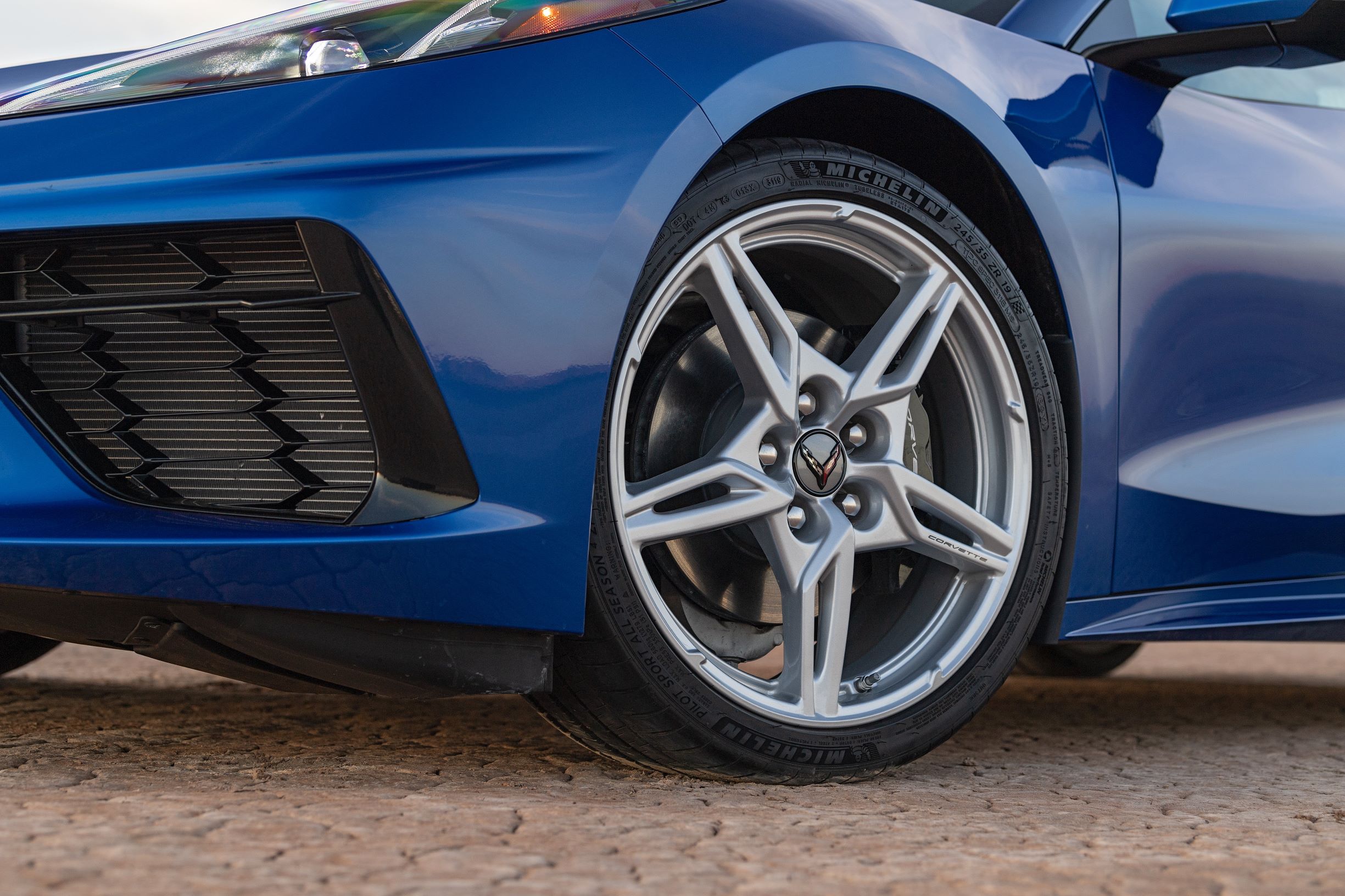
“The big difference is the weight distribution is more rearward,” Barber said when asked about how the mid-engine Stingray compares to its front-engine predecessor.
“That increases acceleration capability. When you’re setting up to exit a corner, you can start picking up throttle sooner and more aggressively, which lets you carry more speed out of the corner, which translates to the next straightaway. That time you gain through the straightaway adds up to significant time over the course of the entire lap.”
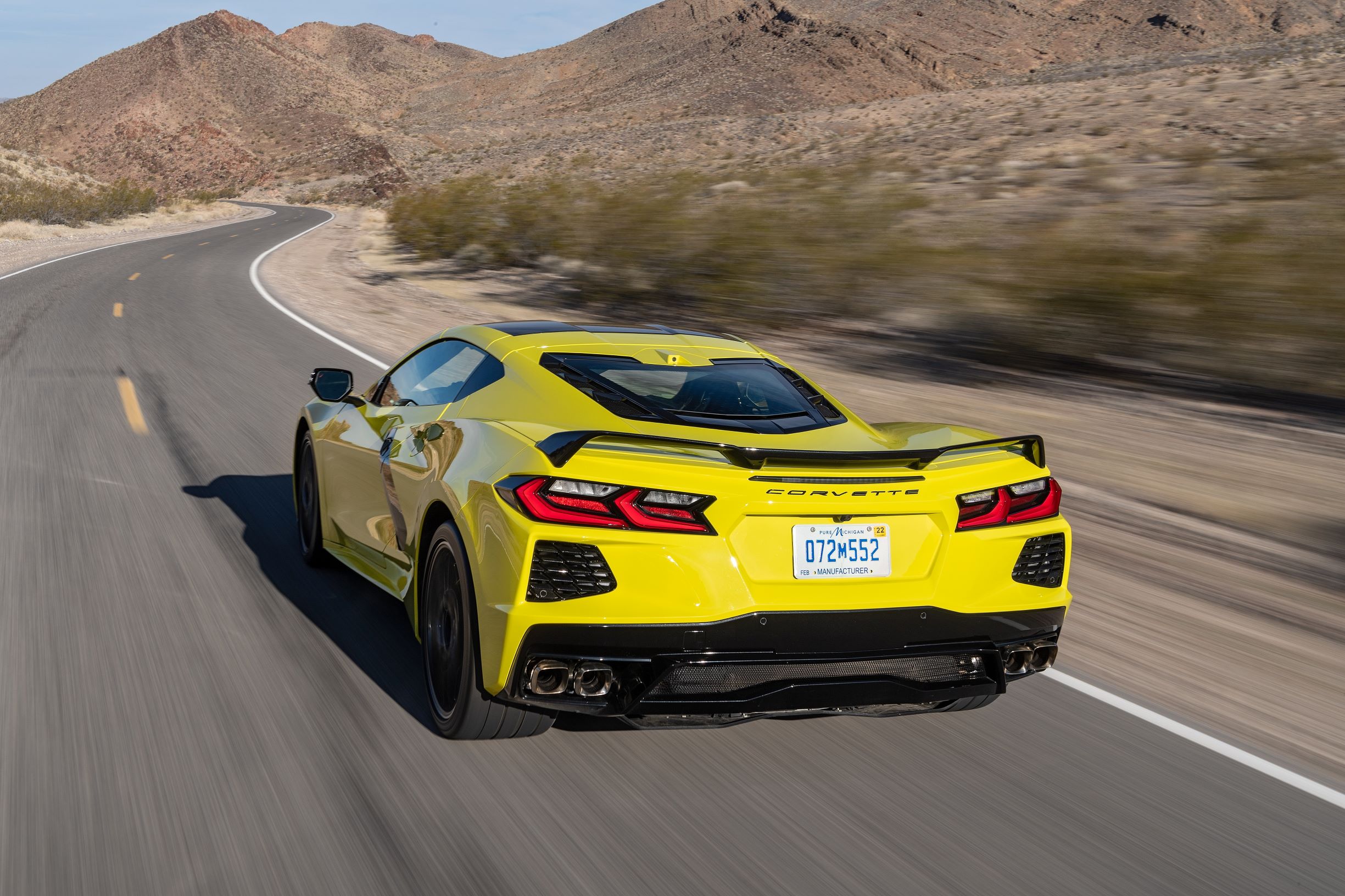
“The mid engine also lets you sit right at the car’s center of gravity,” Barber added, “so it gives you that sharp, direct feel as the car rotates around you in a turn, without any lag offset.”
So the Stingray is a gas on the track. However, it’s not made just to get from point A to point A as quickly as possible, but to function as a thrilling everyday driver. That’s where the other three core modes come in: Tour relaxes the steering response, powertrain and chassis to maximize ride comfort, Sport stiffens the chassis and favors performance over comfort, and Weather amps up stability controls and manages wheel speed on snow and ice.
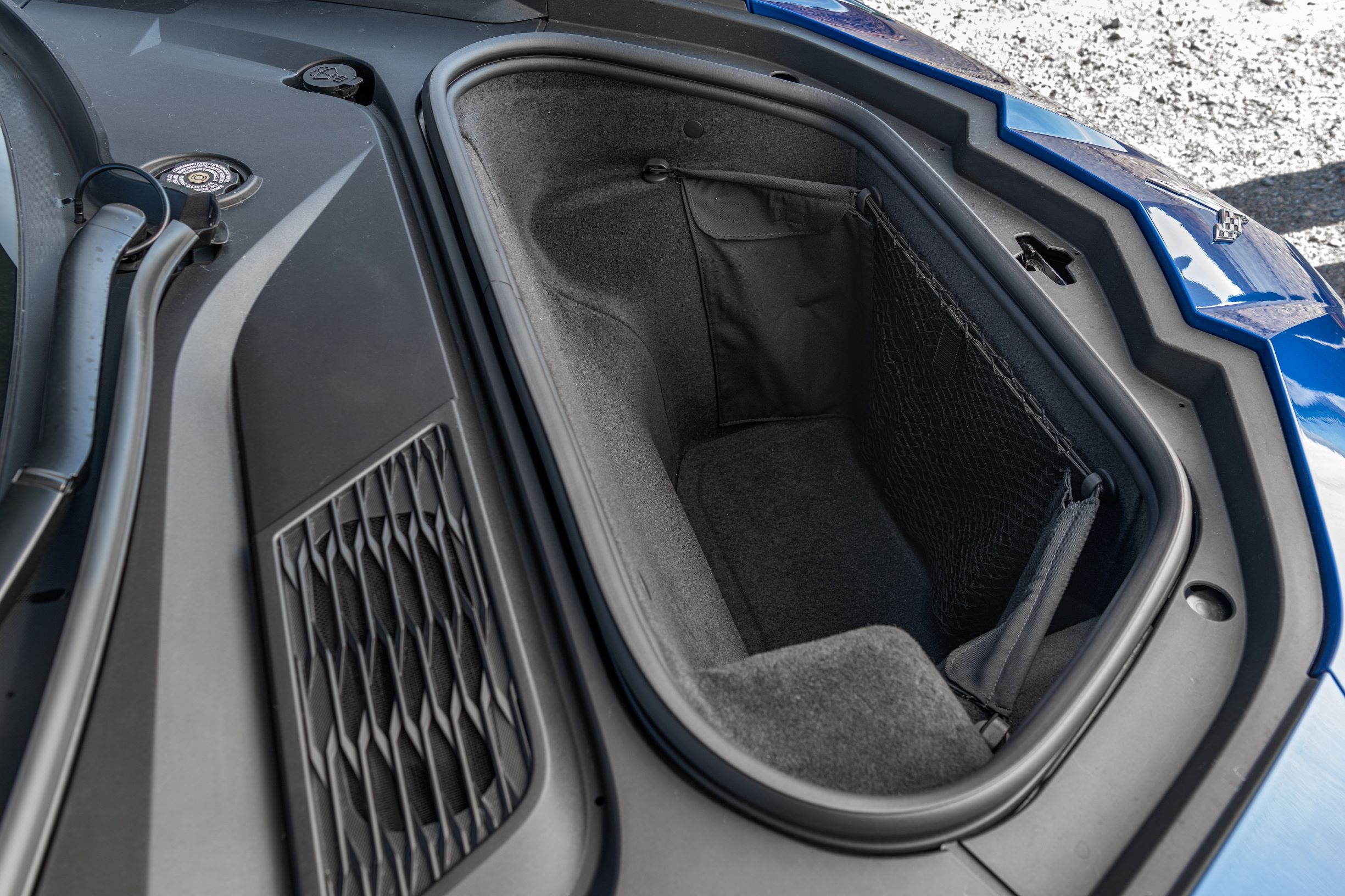
Additionally, there are also two custom settings. My Mode stores a personal combination of preferences for exhaust sound, steering and brake assist, suspension damping, throttle and shift aggressiveness. Z Mode, activated by pressing the steering wheel’s aluminum “Z” button, serves as a sort of personalized Track mode. Another point that Chevy has really hammered with regard to its utility is the 12.3 cubic feet of cargo space available across the front and rear storage areas.
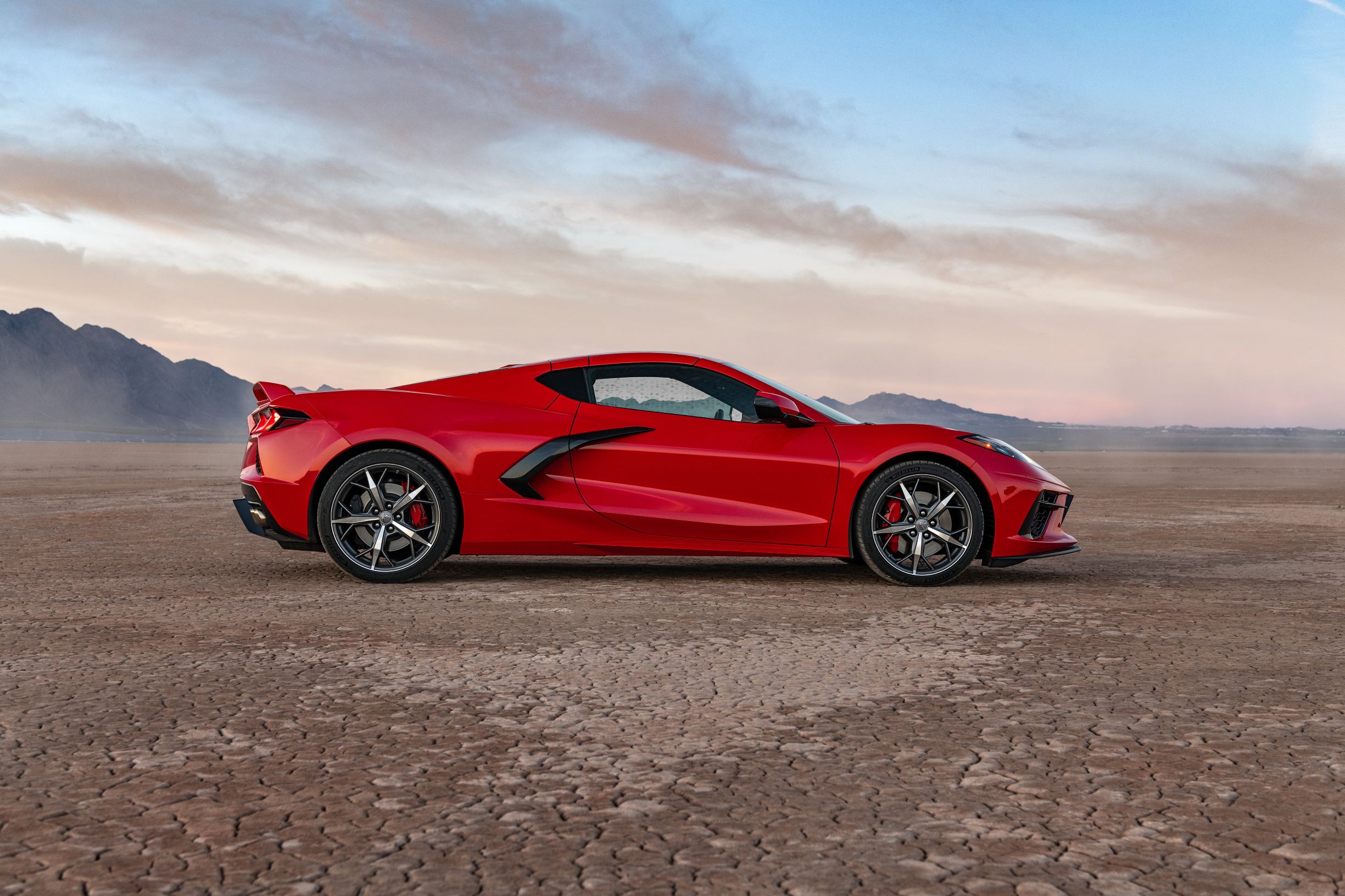
Outside of the country club, I spent most of my time in a 3LT-trimmed Stingray coupe with sueded microfiber headliners and cozy, Nappa leather-clad GT2 seats that gripped my legs. A scenic drive from Vegas to Valley of Fire State Park gave me time to test out the top-end 14-speaker Bose sound system, which delivered high-, low- and mid-range frequencies. With the hard top stowed in the trunk and traveling at highway speeds, that clear audio is overrun by a whirling “helicopter effect,” which will hopefully be addressed when the first convertible Stingrays arrive later this year.
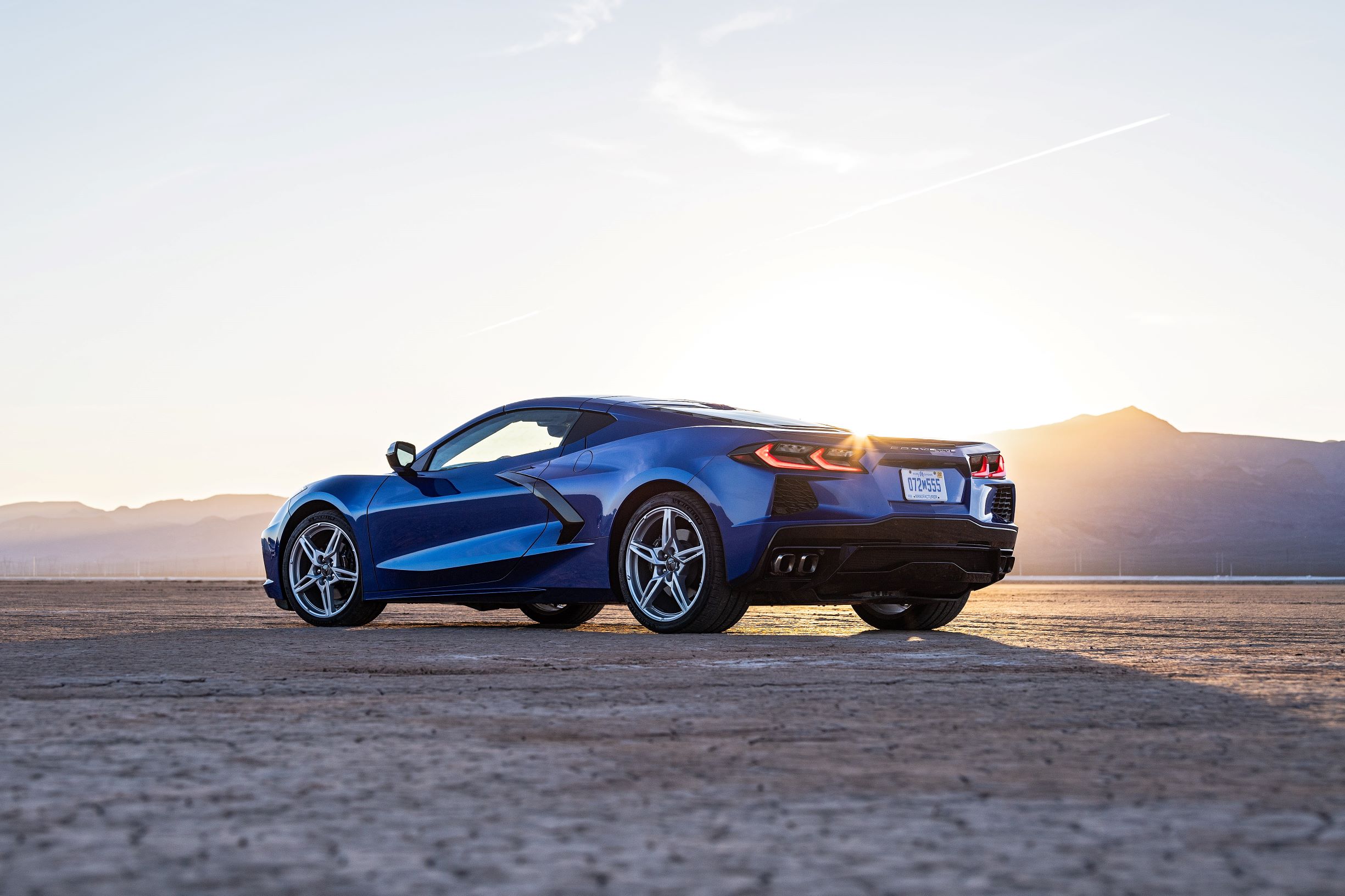
The V8’s bellow, however, remains clear with or without the top on. And having all of that power at your toe tips makes it nearly impossible not to speed or allow other vehicles to pass. As far as I’m concerned, that means that the 2020 Chevrolet Corvette Stingray checks all the supercar boxes.
